Dominant-party system
| Part of the Politics series | ||||||
| Party politics | ||||||
|---|---|---|---|---|---|---|
| Political spectrum | ||||||
|
||||||
| Party platform | ||||||
|
||||||
| Party system | ||||||
|
||||||
| Coalition | ||||||
|
|
||||||
| Lists | ||||||
| Politics portal | ||||||
A dominant-party system or one-party dominant system, is a system where there is "a category of parties/political organisations that have successively won election victories and whose future defeat cannot be envisaged or is unlikely for the foreseeable future."[1] A wide range of parties have been cited as being dominant at one time or another, including the Kuomintang in the Republic of China, the African National Congress (ANC) in South Africa, the Liberal Democratic Party in Japan, Bangladesh Awami League in Bangladesh and the ZANU-PF in Zimbabwe.[1]
Historical overview
Opponents of the "dominant party" system or theory argue that it views the meaning of democracy as given, and that it assumes that only a particular conception of representative democracy (in which different parties alternate frequently in power) is valid.[1] One author argues that "the dominant party 'system' is deeply flawed as a mode of analysis and lacks explanatory capacity. But it is also a very conservative approach to politics. Its fundamental political assumptions are restricted to one form of democracy, electoral politics and hostile to popular politics. This is manifest in the obsession with the quality of electoral opposition and its sidelining or ignoring of popular political activity organised in other ways. The assumption in this approach is that other forms of organisation and opposition are of limited importance or a separate matter from the consolidation of their version of democracy."[1]
One of the dangers of dominant parties is "the tendency of dominant parties to conflate party and state and to appoint party officials to senior positions irrespective of their having the required qualities."[1] However, in some countries this is common practice even when there is no dominant party.[1] In contrast to one-party systems, dominant-party systems can occur within a context of a democratic system. In a one-party system other parties are banned, but in dominant-party systems other political parties are tolerated, and (in democratic dominant-party systems) operate without overt legal impediment, but do not have a realistic chance of winning; the dominant party genuinely wins the votes of the vast majority of voters every time (or, in authoritarian systems, claims to). Under authoritarian dominant-party systems, which may be referred to as "electoralism" or "soft authoritarianism", opposition parties are legally allowed to operate, but are too weak or ineffective to seriously challenge power, perhaps through various forms of corruption, constitutional quirks that intentionally undermine the ability for an effective opposition to thrive, institutional and/or organizational conventions that support the status quo, or inherent cultural values averse to change.
In some states opposition parties are subject to varying degrees of official harassment and most often deal with restrictions on free speech (such as press club), lawsuits against the opposition, rules or electoral systems (such as gerrymandering of electoral districts) designed to put them at a disadvantage. In some cases outright electoral fraud keeps the opposition from power. On the other hand, some dominant-party systems occur, at least temporarily, in countries that are widely seen, both by their citizens and outside observers, to be textbook examples of democracy. The reasons why a dominant-party system may form in such a country are often debated: Supporters of the dominant party tend to argue that their party is simply doing a good job in government and the opposition continuously proposes unrealistic or unpopular changes, while supporters of the opposition tend to argue that the electoral system disfavors them (for example because it is based on the principle of first past the post), or that the dominant party receives a disproportionate amount of funding from various sources and is therefore able to mount more persuasive campaigns. In states with ethnic issues, one party may be seen as being the party for an ethnicity or race with the party for the majority ethnic, racial or religious group dominating, e.g., the African National Congress in South Africa (governing since 1994) has strong support amongst Black South Africans, the Ulster Unionist Party governed Northern Ireland from its creation in 1921 until 1972 with the support of the Protestant majority.
Sub-national entities are often dominated by one party due the area's demographic being on one end of the spectrum. For example, the current elected government of the District of Columbia has been governed by Democrats since its creation in the 1970s, Bavaria by the Christian Social Union since 1957, and Alberta by Progressive Conservatives 1971-2015. On the other hand, where the dominant party rules nationally on a genuinely democratic basis, the opposition may be strong in one or more subnational areas, possibly even constituting a dominant party locally; an example is South Africa, where although the African National Congress is dominant at the national level, the opposition Democratic Alliance is strong to dominant in the Province of Western Cape.
Examples
Current dominant-party systems
Africa
- National Liberation Front (FLN)[2]
- In power since independence in 1962, sole legal party 1962-1989
- Led by President Abdelaziz Bouteflika, in office since 27 April 1999
- Presidential election, 2009: Abdelaziz Bouteflika (FLN) elected with 90.24% of the vote
- Presidential election, 2014: Abdelaziz Bouteflika (FLN) elected with 81.53% of the vote
- Parliamentary election, 2007: FLN 136 of 389 seats
- Parliamentary election, 2012: FLN 208 of 462 seats
- Popular Movement for the Liberation of Angola, Movimento Popular de Libertação de Angola (MPLA)[3][4]
- In power since independence, 11 November 1975; sole legal party, 1975–91
- Led by President José Eduardo dos Santos, in office since 10 September 1979
- In the presidential election of 1992, dos Santos (MPLA-PT) won 49.6% of the vote. As this was not an absolute majority, a runoff against Jonas Savimbi (40.1%) was required, but did not take place. Dos Santos remained in office without democratic legitimacy.
- Parliamentary election, 1992: MPLA 53.7% and 129 of 220 seats
- Parliamentary election, 2008: MPLA 81.6% and 191 of 220 seats
- New constitution, 2010: popular election of president abolished in favour of a rule that the top candidate of the most voted party in parliamentary elections becomes president.
- New parliamentary elections held on August 31, 2012: MPLA 71% and 175 of 220 seats, José Eduardo dos Santos (as head candidate) automatically confirmed as state president (holding now this office for the first time in accordance with the constitution).
- Botswana Democratic Party (BDP)[5]
- Led by President Ian Khama, in office since 1 April 2008
- In power since independence in 1966,[6] first elected 3 March 1965
- Parliamentary election, 2014: BDP 46.5% and 37 of 57 seats
- Local elections, 2009: BDP 333 of 490 seats
- Cameroon People's Democratic Movement (Rassemblement Démocratique et Populaire du Cameroun, RDPC)
- Led by President Paul Biya, in office since 6 November 1982
- In power, under various names, since independence, 1 January 1960 (Sole legal party, 1966–1990)
- Presidential election, 2004: Paul Biya (RDPC) 70.9%
- Parliamentary election, 2007: RDPC 153 of 180 ttyl
- Patriotic Salvation Movement (Mouvement Patriotique de Salut de SMPS)
- Led by President Idriss Déby Itno, in office since 2 December 1990
- In power since 2 December 1990
- Presidential election, 2006: Idriss Déby (MPS) 64.7%
- Parliamentary election, 2002: MPS 110 of 155 seats
- Congolese Party of Labour (Parti Congolais du Travail, PCT)
- Led by President Denis Sassou-Nguesso, in office from 8 February 1979 to 31 August 1992 and since 15 October 1997
- In power, under various names, from 1963 to 1992 and since 1997 (Sole legal party, 1963–1990)
- Presidential election, 2002: Denis Sassou-Nguesso (PCT) 89.4%
- Parliamentary election, 2002: PCT 53 of 137 seats
- People's Rally for Progress (Rassemblement Populaire pour de Progrès, RPP)
- Led by President Ismail Omar Guelleh, in office since 8 May 1999
- In power since its formation in 1979 (Sole legal party, 1979–1992)
- Presidential election, 2016: Ismail Omar Guelleh (RPP) 87.07%
- Parliamentary election, 2013: RPP in coalition, 61.5% and 43 of 65 seats
- Democratic Party of Equatorial Guinea (Partido Democrático de Guinea Ecuatorial, PDGE)
- Led by President Teodoro Obiang Nguema Mbasogo, in office since 3 August 1979
- In power since its formation in 1987 (Sole legal party, 1987–1991)
- Presidential election, 2016: Teodoro Obiang Nguema Mbasogo (PDGE) 93.53%
- Senate election, 2013: PDGE 69 of 70 seats (Includes 15 unelected representatives appointed by the president.)
- Chamber of People's Representatives election, 2013: PDGE 99 of 100 seats
- Ethiopian People's Revolutionary Democratic Front (EPRDF)
- Led by Prime Minister Hailemariam Desalegn, in office since 20 August 2012
- In power since 28 May 1991
- Parliamentary election, 2015: 500 of 547 seats (and further 24 seats of the allied SPDP)
- Gabonese Democratic Party (Parti Démocratique Gabonais, PDG)
- Led by President Ali Bongo Ondimba, in office since 16 October 2009
- In power, under various names, since 28 November 1958 (Sole legal party, 1968–1991)
- Presidential election, 2009: Ali Bongo Ondimba (PDG) 41.7%
- Parliamentary election, 2006: PDG 82 of 120 seats (99 of 120 seats including allies
- Mozambican Liberation Front (FRELIMO)
- Led by President Filipe Nyusi, in office since 15 January 2015
- In power since independence, 25 June 1975 (Sole legal party, 1975–1990)
- Presidential election, 2014: Filipe Nyusi (FRELIMO) 57.03%
- Parliamentary election, 2014: FRELIMO 55.93% and 144 of 250 seats
- South West Africa People's Organisation (SWAPO)
- Led by President Hage Geingob, in office since 21 March 2015
- In power since independence, 21 March 1990
- Presidential election, 2014: Hage Geingob (SWAPO) 86.73%
- Parliamentary election, 2014: SWAPO 77 of 104 seats
- Local elections, 2015: SWAPO 112 of 121 seats
- Regional elections, 2015: SWAPO 277 of 378 seats
- Rwandan Patriotic Front (RPF)
- Led by President Paul Kagame, in office since 24 March 2000
- In power since 19 July 1994
- Presidential election, 2003: Paul Kagame (RPF) 95.1%
- Parliamentary election, 2003: RPF 73.8% and 40 of 53 seats
- African National Congress (ANC)
- Led by President Jacob Zuma, in office since 9 May 2009
- In power since 10 May 1994
- Parliamentary election, 2014: ANC 62.15% and 249 of 400 seats
- Municipal elections, 2016: ANC 53.91%
- Sudan People's Liberation Movement (SPLM)
- Led by President Salva Kiir Mayardit, in office since 9 July 2011; and was President of Southern Sudan since 30 July 2005
- In power since independence, 9 July 2011; and in the autonomous Government of Southern Sudan since formation, July 9, 2005
- Presidential election, 2010: Salva Kiir Mayardit (SPLM) 92.99%
- Parliamentary election, 2010: SPLM 160 of 170 seats
- National Congress (NC)
- Led by President Omar Hassan Ahmad al-Bashir, in office since 30 June 1989
- In power since its formation, 16 October 1993
- Presidential election, 2015: Omar Hassan Ahmad al-Bashir (NC) 94.05%%
- Parliamentary election, 2015: NC 83.4% and 323 of 426 seats
- Chama Cha Mapinduzi (CCM)
- Led by President John Magufuli, in office since 5 November 2015
- In power, under various names, since independence, 9 December 1961 (Sole legal party, 1964–1992)
- Civic election, 2014: CCM 74.50%
- Presidential election, 2015: John Magufuli (CCM) 58.46%
- Parliamentary election, 2015: CCM 252 of 367 seats
- Union for the Republic (UNIR)
- Led by President Faure Gnassingbé, in office since 5 February 2005
- In power since its formation in 2012
- Presidential election, 2015: Faure Gnassingbé (UNIR) 58.75%
- Parliamentary election, 2013: UNIR 62 of 91 seats
- National Resistance Movement (NRM)
- Led by President Yoweri Museveni, in office since 29 January 1986.
- In power as de facto dominant party since 29 January 1986 as a "non-party Movement."
- Became de jure dominant party with the return of multi-party elections on 28 July 2005.
- Presidential election, 2006: Yoweri Museveni (NRM) 59.26%
- Parliamentary election, 2006: NRM 205 of 319 seats
- Presidential election, 2011: Yoweri Museveni (NRM) 68.38%
- Parliamentary election, 2011: NRM 263 of 375 seats
- Zimbabwe African National Union – Patriotic Front (ZANU-PF)
- Led by President Robert Mugabe, in office since 18 April 1980 (as president since 31 December 1987)
- In power since independence, 17 April 1980
- Presidential election, 2013: Robert Mugabe (ZANU-PF) 61.09%
- House of Assembly election, 2013: ZANU-PF 62.39% and 197 of 270 elective seats
- Senate election, 2013: ZANU-PF 57 of 80 elective seats
Americas
- The Barbuda People's Movement has ruled the island of Barbuda since 1979, and has won every election for the island's seat in the national House of Representatives.
The ![]() United States as a whole has a two-party system, with the main parties since the mid-19th century being Democratic Party and the Republican Party. However, some states and cities have been dominated by one of these parties for up to several decades.
United States as a whole has a two-party system, with the main parties since the mid-19th century being Democratic Party and the Republican Party. However, some states and cities have been dominated by one of these parties for up to several decades.
Dominated by the Democratic Party:
-
 California had a Republican governor as late as 2011 but has voted for Democrats in national races most of the time and has a legislature dominated by the Democrats. Due to the top two primary many statewide and local races are contested by two members of the Democratic Party in the general election.
California had a Republican governor as late as 2011 but has voted for Democrats in national races most of the time and has a legislature dominated by the Democrats. Due to the top two primary many statewide and local races are contested by two members of the Democratic Party in the general election. -
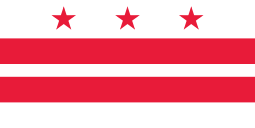 District of Columbia has been continuously ruled by Democrats since the Home Rule Act of 1973 was passed.
District of Columbia has been continuously ruled by Democrats since the Home Rule Act of 1973 was passed. -
 Chicago has been historically dominated by the Cook County Democratic Party - the office of mayor has been filled by a Democrat continuously since 1931.
Chicago has been historically dominated by the Cook County Democratic Party - the office of mayor has been filled by a Democrat continuously since 1931. - Milwaukee has been dominated by Democrats since the 1960s. Beforehand, it was dominated by the "Sewer Socialism" movement.
-
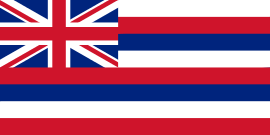 Hawaii has been dominated by Democrats since the Democratic Revolution of 1954. Beforehand, the state was dominated by Republicans and a sugar oligarchy.
Hawaii has been dominated by Democrats since the Democratic Revolution of 1954. Beforehand, the state was dominated by Republicans and a sugar oligarchy. -
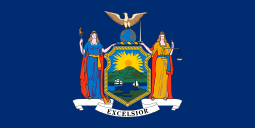 New York has an overwhelmingly Democratic population. Democrats have controlled all statewide offices since 2006. The Republicans have managed one Republican governor since 1974—George Pataki, who benefited from three-way races between him, the Democrats, and third-party candidate Tom Golisano in all three elections he faced—and have narrowly clung to control of the New York State Senate by way of gerrymandering and coalitions, preventing the Democrats from having full control of the political process.
New York has an overwhelmingly Democratic population. Democrats have controlled all statewide offices since 2006. The Republicans have managed one Republican governor since 1974—George Pataki, who benefited from three-way races between him, the Democrats, and third-party candidate Tom Golisano in all three elections he faced—and have narrowly clung to control of the New York State Senate by way of gerrymandering and coalitions, preventing the Democrats from having full control of the political process. -
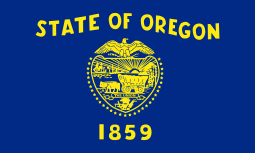 Oregon, while once a heavily Republican state, has had only one Republican governor since 1975, has voted Democrat in every Presidential election since 1988, and had no Republican statewide elected officials from 2002 until the election of Dennis Richardson as Oregon Secretary of State in 2016.
Oregon, while once a heavily Republican state, has had only one Republican governor since 1975, has voted Democrat in every Presidential election since 1988, and had no Republican statewide elected officials from 2002 until the election of Dennis Richardson as Oregon Secretary of State in 2016. -
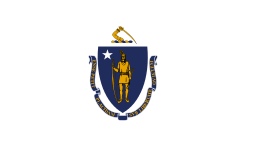 Massachusetts has been dominated by Democrats for several decades, save a few Republican governors.
Massachusetts has been dominated by Democrats for several decades, save a few Republican governors. -
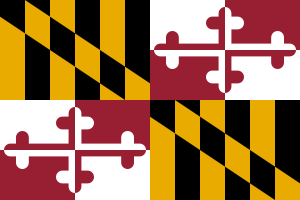 Maryland has been dominated by Democrats since the Civil War, with some exceptions.
Maryland has been dominated by Democrats since the Civil War, with some exceptions. -
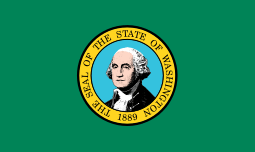 Washington in a manner similar to Oregon, has not had a Republican governor since 1985.
Washington in a manner similar to Oregon, has not had a Republican governor since 1985.
Dominated by the Republican Party:
-
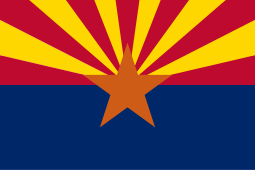 Arizona has been considered a "Republican party stronghold" in recent decades, with a continuous majority in the State House of Representatives since 1967.
Arizona has been considered a "Republican party stronghold" in recent decades, with a continuous majority in the State House of Representatives since 1967. -
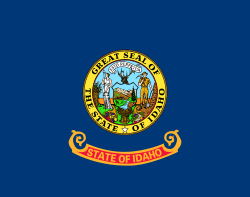 Idaho has been dominated by Republicans for most of its existence, with no Democratic governors since 1994 and only two years in which the State Senate was tied evenly since 1960.
Idaho has been dominated by Republicans for most of its existence, with no Democratic governors since 1994 and only two years in which the State Senate was tied evenly since 1960. -
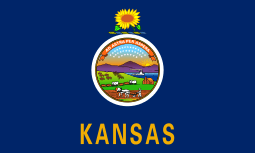 Kansas has been dominated by Republicans for most of its existence, with only four years of Democratic majorities in the State House of Representatives since 1915 and only Republican majorities in the same period. Since 1967, however, five of the last nine governors have been Democrats, although one of these Democrats only held office for two years.[8]
Kansas has been dominated by Republicans for most of its existence, with only four years of Democratic majorities in the State House of Representatives since 1915 and only Republican majorities in the same period. Since 1967, however, five of the last nine governors have been Democrats, although one of these Democrats only held office for two years.[8] -
 Nebraska has been dominated by Republicans for most of its existence, with a non-partisan (with a de facto Republican majority since records began in 2007) legislature, mostly Republican governors and elected cabinet officials and only one Republican who changed party to Democrat in 2006 holding state-level partisan office since 1999.
Nebraska has been dominated by Republicans for most of its existence, with a non-partisan (with a de facto Republican majority since records began in 2007) legislature, mostly Republican governors and elected cabinet officials and only one Republican who changed party to Democrat in 2006 holding state-level partisan office since 1999. -
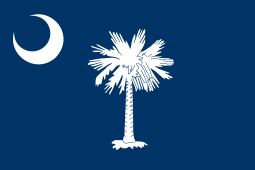 South Carolina: Solid South; dominated by Republicans since the mid-1990s.
South Carolina: Solid South; dominated by Republicans since the mid-1990s. -
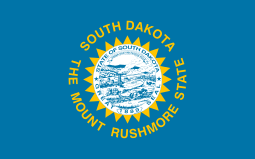 South Dakota has been dominated by Republicans for most of its existence, aside from a few Democratic and Populist governments and coalitions with Republicans, with only three elected high officials and two years of State Senate dominance since 1979.
South Dakota has been dominated by Republicans for most of its existence, aside from a few Democratic and Populist governments and coalitions with Republicans, with only three elected high officials and two years of State Senate dominance since 1979. -
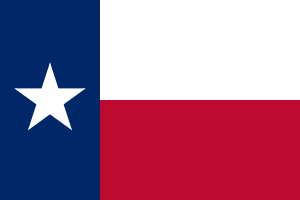 Texas: Solid South; dominated by Republicans since the mid-1990s.
Texas: Solid South; dominated by Republicans since the mid-1990s. -
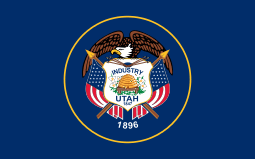 Utah has been dominated by Republicans for most of its existence, except for Democratic dominance during the Fifth Party System and between 1917 and 1920, the 1890s, and between 1959 and 1984.
Utah has been dominated by Republicans for most of its existence, except for Democratic dominance during the Fifth Party System and between 1917 and 1920, the 1890s, and between 1959 and 1984. -
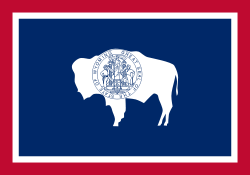 Wyoming has been dominated by Republicans for most of its existence, with only four years where a house of the legislature has been Democratic since 1939, and mostly Republican governors during that period.
Wyoming has been dominated by Republicans for most of its existence, with only four years where a house of the legislature has been Democratic since 1939, and mostly Republican governors during that period.
Dominant-party systems can also exist on native reservations with republican forms of government. The Seneca Nation of Indians, a tribe with territory within the bounds of New York State, has had the Seneca Party as the dominant party in its political system for several decades.
- FSLN
- presidency since 2006 (and 1984-1990) mayor of every major city, including Managua, majorities in most departments.
- Local elections, 2012: 75,7% and 127 of 153 seats
- General election, 2016: Daniel Ortega 72.50%
- National election, 2016: 66.8%
- Constituency election, 2016: 65.7%
- Central American Parliament, 2016: 68.6%
Asia / Oceania
- Cambodian People's Party (Kanakpak Pracheachon Kampuchea) (CPP)
- Led by Prime Minister Hun Sen, in office since 14 January 1985
- In power since 1981
- Senate election, 2012: 77.81% and 46 of 61 seats
- Communal elections, 2012: 61.67% and 8292 of 11459 seats
- General election, 2013: 48.83% and 68 of 123 seats
- Barisan Nasional (National Front), a coalition of 14 parties led by the United Malays National Organisation (UMNO)
- Led by Prime Minister Najib Tun Razak, in office since 3 April 2009[9]
- In power since independence, 28 August 1957
- Parliamentary election, 2013: UMNO 29.45% and 88 out of 222 seats, total for Barisan Nasional 47.38% and 133 out of 222 seats[10]
- Human Rights Protection Party (HRPP)
- Led by Prime Minister Tuila'epa Sailele Malielegaoi, in office since 23 November 1998
- In power since 1982
- Parliamentary election, 2006: HRPP 35 of 49 seats
- People's Action Party (PAP)
- Led by Prime Minister Lee Hsien Loong, in office since 12 August 2004
- In power since 3 June 1959[11]
- Presidential election, 2011: Former PAP members 74.96%[A]
- Parliamentary election, 2015: PAP won 69.9% of the popular vote and 83 out of 89 seats[12]
- Bukit Batok by-election, 2016: 61.2%
- National Progressive Front (NPF), a coalition of 10 parties led by the Arab Socialist Ba'ath Party – Syria Region (Baath Party)
- Led by President Bashar al-Assad, in office since 17 July 2000
- In power since 8 March 1963
- Presidential election, 2014: Bashar al-Assad 88.7%
- Parliamentary election, 2016: Baath Party won 200 out of 250 seats
- People's Democratic Party of Tajikistan is headed by President Emomalii Rahmon
- In power since 1994
- Presidential election in 2013 won by Emomali Rahmon 83,92%.
- Since Parliamentary election in 2015 holds 51 seats in Assembly of Representatives.
- Democratic Party of Turkmenistan is headed by Kasymguly Babaev since 18 August 2013.
- Parliamentary election, 2013: 47 of 125 seats in the Assembly of Turkmenistan.
- Presidential election in 2012 won by Gurbanguly Berdimuhammedow 97,14%.
- Until 2012 it was the sole legal party in Turkmenistan.
- General People's Congress (GPC)
- Since 2012 led by President Abd Rabbuh Mansur Hadi
- In power since the unification of North Yemen and South Yemen in 1990
- Presidential Election, 2012: Abd Rabbuh Mansur Hadi (GPC) 99,8%
- Parliamentary Election, 2003: GPC 58.0% and 238 out of 301 seats
Eurasia
- The Republican Party of Armenia is the dominant party in Armenia since the election of Robert Kocharyan as President, continuing under his successor Serzh Sargsyan.
- Parliamentary election, 2012: 52.7% and 69 of 131 seats
- Presidential election, 2013: Serzh Sargsyan 58.64%
- Local elections, 2016: 52.09%
- New Azerbaijan Party (YAP) has been in power essentially continuously since 1993.
- Presidential election, 2013: Ilham Aliyev 84.54%
- Parliamentary election, 2015: 47.20% and 69 of 125 seats
- Nur Otan is headed by President Nursultan Nazarbayev since 4 July 2007.
- Since last parliamentary election in 2016: 82.20% and holds 84 of 107 seats in the Majilis.
- Presidential election in 2015 won by Nursultan Nazarbayev 97,75%.
- Justice and Development Party
- Led by Recep Tayyip Erdoğan
- In power since 2002
- Presidential election, 2014: Recep Tayyip Erdoğan 51.79%
- General election, November 2015: 49.50% and 317 of 550 seats
- Local elections, 2014: 42.87%
- United Russia
- Led by President Vladimir Putin (President 2000-2008, and since 2012; Prime Minister 1999–2000, 2008–2012), nominated President Dmitry Medvedev (2008–2012)
- In power since 2003
- Presidential election, 2012: Vladimir Putin 63.60%
- Parliamentary election, 2016: 54.20% and 343 of 450 seats
Europe
- The Christian Social People's Party (CSV), with its predecessor Party of the Right, has governed Luxembourg continuously since 1917, except for 1974–79. However, Luxembourg has a coalition system, and the CSV has been in coalition with at least one of the two next two leading parties for all but four years. It has always won a plurality of seats in parliamentary elections, although it has lost the popular vote in 1964 and 1974.
-
.svg.png) Bavaria
Bavaria
- CSU
- Led by Horst Seehofer, Ministers-President (since 2008)
- In power since 1957
- State election, 2013: 47.7%
- Local elections, 2014: 39.7%
- Fidesz
- Led by Viktor Orbán, Prime Minister (since 2010)
- In power since 2010 (won in the European Parliament election, 2009)
- Presidential election, 2012: János Áder (Fidesz) 67.87%
- European Parliament election, 2014: 51.48% and 12 of 21 seats
- Parliamentary election, 2014: 44.87% and 133 of 199 seats
-
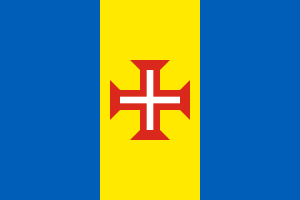 Madeira: the Social Democratic Party has dominated political life in the autonomous region of Madeira since the first regional elections, in 1976. Alberto João Jardim served as President of the Regional Government uninterruptedly from 1978 to 2015.
Madeira: the Social Democratic Party has dominated political life in the autonomous region of Madeira since the first regional elections, in 1976. Alberto João Jardim served as President of the Regional Government uninterruptedly from 1978 to 2015.
- Democratic Party of Socialists of Montenegro, founded in 1943 as Communist Party of Montenegro, part of the Communist Party of Yugoslavia
- Led by Milo Đukanović, seven term Prime Minister (1991-1993, 1993-1996, 1996–1998, 2003–2006, 2008-2009, 2009–2010, 2012-2016) and former President (1998–2002)
- In power since establishment of Communist rule in Montenegro/Yugoslavia in 1944/5 (Sole legal party, 1945–1990)
- Montenegrin presidential election, 2013: Filip Vujanović (DPS), 51.21%
- Parliamentary election, 2016: DPS 41.1% and 35 of 81 seats
Former dominant parties
North America
 Canada: The Liberal Party of Canada was the dominant party in the federal government of Canada for so much of its history that it is sometimes given the moniker "Canada's natural governing party".[16] The party ruled for most of the half-century between 1935 and 1984 (the only exceptions being in 1957-1963 and 1979-1980), as well as 1896-1911, 1921-1930 (save a few months), and 1993-2006. After a decade in opposition, the Liberals have returned to power following the 2015 election.
Canada: The Liberal Party of Canada was the dominant party in the federal government of Canada for so much of its history that it is sometimes given the moniker "Canada's natural governing party".[16] The party ruled for most of the half-century between 1935 and 1984 (the only exceptions being in 1957-1963 and 1979-1980), as well as 1896-1911, 1921-1930 (save a few months), and 1993-2006. After a decade in opposition, the Liberals have returned to power following the 2015 election.
 British Columbia: The Social Credit Party held power for all but 3 years between 1952 and 1991, winning 11 of the 12 elections held during this 39-year period.
British Columbia: The Social Credit Party held power for all but 3 years between 1952 and 1991, winning 11 of the 12 elections held during this 39-year period. 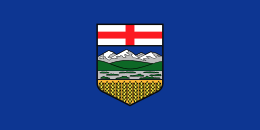 Alberta: The Social Credit Party governed Alberta from 1935 to 1971, and the Alberta PC Party held power from 1971 to 2015.
Alberta: The Social Credit Party governed Alberta from 1935 to 1971, and the Alberta PC Party held power from 1971 to 2015.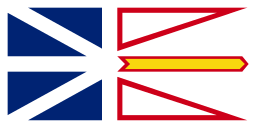 Newfoundland and Labrador: The Liberal Party of Newfoundland and Labrador held power from confederation in 1949 until Joey Smallwood's resignation as Premier in 1972, during the hung Parliament created by the Newfoundland general election, 1971.
Newfoundland and Labrador: The Liberal Party of Newfoundland and Labrador held power from confederation in 1949 until Joey Smallwood's resignation as Premier in 1972, during the hung Parliament created by the Newfoundland general election, 1971.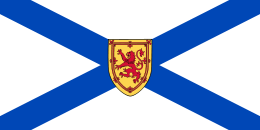 Nova Scotia: The Nova Scotia Liberal Party, in the Province of Nova Scotia, held office in an unbroken period from 1882 to 1925. During the period from 1867 to 1956, the party was in power for 76 of 89 years, most of that time with fewer than 5 opposition members.
Nova Scotia: The Nova Scotia Liberal Party, in the Province of Nova Scotia, held office in an unbroken period from 1882 to 1925. During the period from 1867 to 1956, the party was in power for 76 of 89 years, most of that time with fewer than 5 opposition members.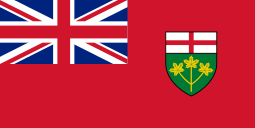 Ontario: The Progressive Conservative Party of Ontario, in the Province of Ontario, held office uninterrupted from 1943 to 1985.
Ontario: The Progressive Conservative Party of Ontario, in the Province of Ontario, held office uninterrupted from 1943 to 1985.
 Mexico: The Institutional Revolutionary Party (PRI) in Mexico ruled from 1929 to 2000 and again since 2012.
Mexico: The Institutional Revolutionary Party (PRI) in Mexico ruled from 1929 to 2000 and again since 2012. United States of America:
United States of America:
- During the "Era of Good Feeling," the Democratic-Republican Party dominated national politics with no effective opposition from the Federalist Party or any third parties, allowing James Monroe to run unopposed in the 1820 presidential election. This dominance continued until the rise of the American Whig Party circa 1830.
- Southern United States:
- The South (usually defined as coextensive with the former Confederacy, with the exception of most of Texas) was known until the era of the civil-rights movement as the "Solid South" due to its states' reliable support of the United States' Democratic Party. Several states had an unbroken succession of Democratic governors for several decades or over a century.
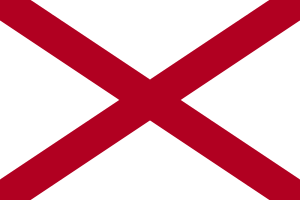 Alabama, 1874–1987 (113 years)
Alabama, 1874–1987 (113 years)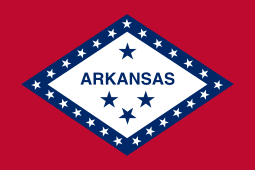 Arkansas, 1874–1967 (93 years)
Arkansas, 1874–1967 (93 years)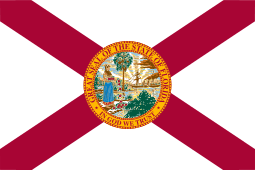 Florida, 1877–1967 (90 years)
Florida, 1877–1967 (90 years).svg.png) Georgia, 1872–2003 (131 years)
Georgia, 1872–2003 (131 years)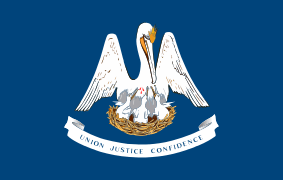 Louisiana, 1877–1980 (103 years)
Louisiana, 1877–1980 (103 years) Mississippi, 1876–1992 (116 years)
Mississippi, 1876–1992 (116 years) North Carolina, 1901–1973 (72 years)
North Carolina, 1901–1973 (72 years)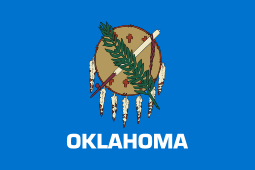 Oklahoma, 1907-1963 (56 years)
Oklahoma, 1907-1963 (56 years) South Carolina, 1876–1975 (99 years)
South Carolina, 1876–1975 (99 years)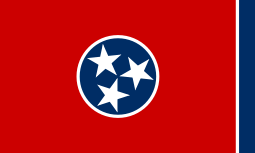 Tennessee, 1883–1971 (88 years), with two interruptions
Tennessee, 1883–1971 (88 years), with two interruptions Texas, 1874–1979 (105 years)
Texas, 1874–1979 (105 years)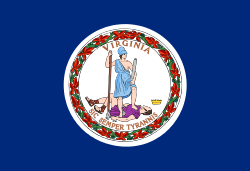 Virginia, 1869–1970 (101 years)
Virginia, 1869–1970 (101 years)
- During and after that movement, however, factors such as the national Democratic Party's support for the civil-rights movement and the national Republican Party's "Southern strategy" and support for the application of religious values to politics eroded the South's support for the Democrats.
Caribbean and Central America
- The Popular Democratic Party in Puerto Rico from 1949 to 1969.
- The Antigua Labour Party in Antigua and Barbuda, 1960–1971 and 1976–2004.
- The United Bermuda Party in Bermuda from 1968 to 1998.
- The Progressive Liberal Party in the Bahamas from 1967 to 1992 and 2002–2007
South America
- The Liberal Party of Colombia from 1863 to 1880
- The National Autonomist Party (PAN) of Argentina from 1874 to 1916
- The Colorado Party of Uruguay, between 1868 and 1959
- The Colorado Party of Paraguay, 1880–1904 and 1947–2008. They were the sole legal party from 1947 to 1962.
- The Revolutionary Nationalist Movement (MNR) in Bolivia from 1952 to 1964.
- The National Renewal Alliance Party (ARENA) in Brazil from 1965 to 1979
Europe
- In Turkey's single-party period, the Republican People's Party became the major political organisation of a single-party state. However, CHP faced two opposition parties during this period, both established upon the request of the founder of Turkey and CHP leader, Mustafa Kemal Atatürk, in efforts to jump-start multiparty democracy in Turkey.[17]
- Italy's Christian Democracy dominated the Italian politics for almost 50 years as the major party in every coalition that governed the country from 1944 until its demise amid a welter of corruption allegations in 1992–1994. The main opposition to the Christian democratic governments was the Italian Communist Party.
- The Portuguese Republican Party, during most of the Portuguese First Republic's existence (1910–1926): After the coup that put an end to Portugal's constitutional monarchy in 1910, the electoral system, which had always ensured victory to the party in government, was left unchanged. Before 1910, it had been the reigning monarch's responsibility to ensure that no one party remain too long in government, usually by disbanding Parliament and calling for new elections. The republic's constitution added no such proviso, and the Portuguese Republican Party was able to keep the other minor republican parties (monarchic parties had been declared illegal) from winning elections. On the rare occasions when it was ousted from power, it was overtrown by force and was again by the means of a counter-coup that it returned to power, until its final fall, with the republic itself, in 1926.
- The Ulster Unionist Party in the former devolved administration of Northern Ireland between 1921 and 1972.[18]
- The Swedish Social Democratic Party in Sweden from 1932 to 1976 except only for some months in 1936 (1936–1939 and 1951–1957 in coalition with the Farmers' League, 1939–1945 at the head of a government of national unity) It has also held the power the vast majority of elections even after 1976. The party is still the largest party in Sweden and has been so in every general election since 1917 (hence the largest party even before the universal suffrage was introduces in 1921). The former Prime minister and party leader Tage Erlander led the Swedish government for an uninterrupted tenure of 23 years (1946-1969), the longest in any democracy so far.
- The Norwegian Labour Party ruling from 1935 to 1965, though it has been the biggest party in Norway since 1927 and has been in power many other times.
- The Scottish Labour Party won every election to the House of Commons in Scotland from 1964 to 2015, where it was heavily defeated and reduced to 1 seat.[19] It controlled the Scottish Parliament from its inception in 1999 until the 2007 election where it lost to the SNP.[20]
- Convergència i Unió coalition (federated political party after 2001) in Catalonia governed the autonomous Catalan government from 1980 to 2003 under the leadership of Jordi Pujol with parliamentary absolute majority or in coalition with other smaller parties.
- The Socialist Party of Serbia in FR Yugoslavia from 1992 to 2000.
- Ireland's Fianna Fáil was the largest party in Dáil Éireann between 1932 and 2011 and in power for 61 of those 79 years. However, the party were heavily defeated in the Irish general election, 2011, coming third.
Asia
- The Nacionalista Party in the Philippines was the dominant party during various times in the nation's history from 1916–1941, and on 1945
- The Indian National Congress was in power both at the Union and many states from 1946 to 1996 and also from 2004 to 2014.[21]
- In Bangladesh, the Awami League was the country's predominant political party between 1972 and 1975 and from 2009 to present. After the military coup of 1975, the Bangladesh Nationalist Party (BNP) became the dominant political force between 1977 and 1982. Under the autocratic regime of General Hussain Muhammad Ershad, the Jatiya Party was the dominant party between 1986 and 1990. Currently, Bangladesh Awami League again has become the dominant political force since 2008.
- The Democratic Party was the dominant party in Cambodia from 1946 to 1955.
- The Sangkum in Cambodia was the dominant party under Prince Norodom Sihanouk as head of government from 1955 to 1970.
- The Social Republican Party of the Khmer Republic (now Cambodia) was the dominant party under General Lon Nol from 1972 to 1975.
- The Anti-Fascist People's Freedom League in Burma (now Myanmar) from 1948 to 1962.
- The Kuomintang established a de facto one-party state in the Republic of China on the mainland and subsequently on Taiwan until political liberalization and the lifting of martial law in the late 1980s. The Kuomintang continued to dominate the political system until the victory of the opposition Democratic Progressive Party in the 2000 presidential election. Kuomintang maintained control of the Legislative Yuan until 2016.
- Japan Liberal Democratic Party, in power 1955–1993, 1994–2009 and since 2012.
- Liberal Party (South Korea) in power 1948-1960, Democratic Republican Party (South Korea) in power 1962–1979 and Democratic Justice Party in power 1980-1993.
- South Vietnam Personalist Labor Revolutionary Party in power 1955–1963, National Social Democratic Front in power 1969 to April 1975.
- The Golkar (Acronym of Golongan Karya or Functional Group) in Indonesia from 1971 to 1999.
- Kilusang Bagong Lipunan in the Philippines from 1978 to 1986.
- Mapai in Israel was the dominant party from the establishment of the state of Israel in 1948 until merging into present-day Israeli Labor Party in 1968. The Labor Party started losing influence in the 1970s, particularly following the Yom Kippur War, and eventually lost power in the 1977 election. The Labor Party continued to participate in several coalition governments until 2009.
Africa
- The National Party in South Africa from 1948 to 1994.
- The National Democratic Party (NDP) of Egypt, under various names, from 1952 to 2011 (as Arab Socialist Union, sole legal party 1953–1978)
- People's Democratic Party (PDP) was in power from May 29, 1999 till May 29, 2015 when the opposition party All Progressives Congress (APC) won the presidential elections in Nigeria.
- The Democratic Constitutional Rally in Tunisia, 1956-2011 (as the sole legal party between 1963 and 1981)
- The Socialist Party in Senegal from 1960 to 2000.
- The Rhodesian Front in Rhodesia (now Zimbabwe), under the leadership of Ian Smith, from 1962 to 1979.
- The People's Progressive Party in The Gambia from 1962 to 1994.
- The People's Party (until 2009 Seychelles People's Progressive Front) on the Seychelles from 1977 to 2016, as the sole legal party between 1979 and 1991.
- The Movement for Multiparty Democracy in Zambia from 1991 to 2011.
Note
A Presidents in Singapore are not allowed to belong to any party.
Tony Tan (former PAP member) 35.20%
Tan Cheng Bock (another former PAP member): 34.85%
Tan Kin Lian: (another former PAP member): 4.91%
See also
References
- 1 2 3 4 5 6 Suttner, R. (2006), "Party dominance 'theory': Of what value?", Politikon 33 (3), pp. 277-297
- ↑ King, Stephen J. (2009). The New Authoritarianism in the Middle East and North Africa. Bloomington, Indiana: Indiana University Press. p. 208. ISBN 978-0-253-35397-9.
- ↑ Mehler, Andreas; Melber, Henning; Van Walraven, Klaas (2009). Africa Yearbook: Politics, Economy and Society South of the Sahara in 2008. Leiden: Brill. p. 411. ISBN 978-90-04-17811-3.
- ↑ http://www.bti-project.org/country-reports/esa/ago/ (English)
- ↑ Doorenspleet, Renske; Nijzink, Lia (2014). Party Systems and Democracy in Africa. Basingstoke: Palgrave Macmillan. p. 174. ISBN 978-1-137-01170-1.
- ↑ "Botswana's ruling Democratic Party wins general elections". BBC News. BBC. 26 October 2014. Retrieved 22 October 2015.
- ↑ O'Gorman, Melanie (26 April 2012). "Why the CCM won't lose: the roots of single-party dominance in Tanzania". Journal of Contemporary African Studies. Taylor & Francis. 30 (2): 313–333. doi:10.1080/02589001.2012.669566. Retrieved 11 July 2015.
- ↑ "State of Kansas Governors". TheUS50.com. Retrieved August 26, 2014.
- ↑ "Biography: Office of the Prime Minister". Office of the Prime Minister of Malaysia. 30 April 2014. Retrieved 12 November 2014.
- ↑ "13th Malaysian General Election". The Star. Petaling Jaya. Retrieved 12 November 2014.
- ↑ "Singapore Elections Department - Parliamentary Election Results". Retrieved 9 September 2015.
- ↑ "Singapore Elections Department - 2011 Parliamentary Election Results". Retrieved 9 September 2015.
- ↑ "TURKEY - AKP ushering in 'dominant-party system,' says expert". hurriyetdailynews.com. Retrieved 30 May 2015.
- ↑ "Turkey Under the AKP: The Era of Dominant-Party Politics". journalofdemocracy.org. Retrieved 30 May 2015.
- ↑ http://www.suits.su.se/about-us/events/open-lectures/turkey-s-party-system-in-change-the-emerging-dominant-party-system-and-the-main-opposition-party-1.155761
- ↑ Canada's 'natural governing party'. CBC News in Depth, 4 December 2006. Retrieved 2012-08-10.
- ↑ http://www.utoronto.ca/ai/learningtolose/participants.html
- ↑ Garnett, Mark; Lynch, Philip (2007). Exploring British Politics. London: Pearson Education. p. 322. ISBN 978-0-582-89431-0.
- ↑ http://www.ft.com/cms/s/2/f350d9ac-f4fa-11e4-8a42-00144feab7de.html#axzz3pFUtHHx8
- ↑ Cairney, Paul; McGarvey, Neil (2013). Scottish Politics. Houndmills: Palgrave Macmillan Limited. p. 58. ISBN 978-0-230-39046-1.
- ↑ Johari, J. C. (1997). Indian Political System: a Critical Study of the Constitutional Structure and the Emerging Trends of Indian Politics. New Delhi: Anmol Publications. p. 250. ISBN 978-81-7488-162-5.